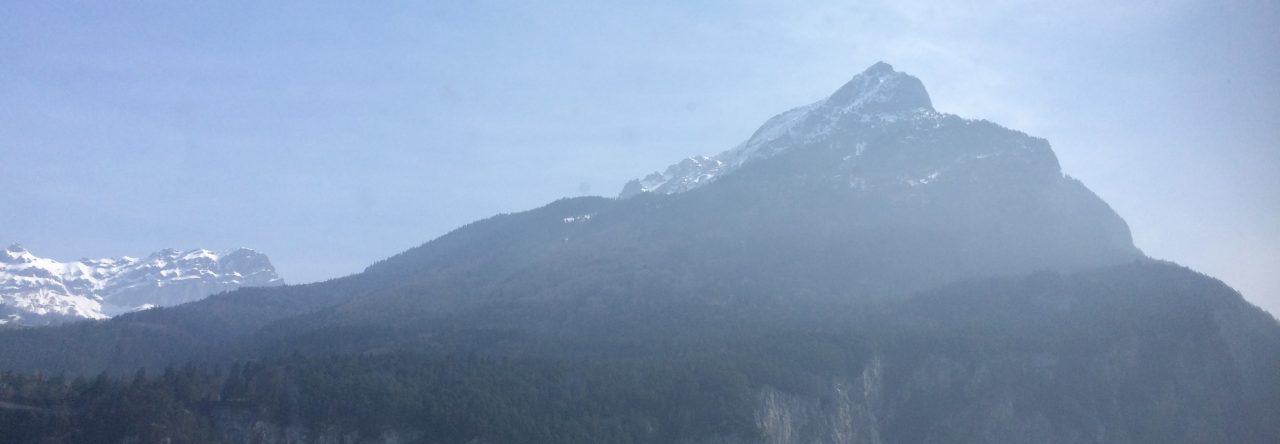
Every body tells a story.
Holy Week is an interesting time to visit a cadaver lab. I had called upon the one that is tucked into the rear of Western’s health and human sciences building, itself backed into the slope of a mountain, there to meet the dean for an introduction and tour of the 160,000 square-foot behemoth that houses our healthcare programs.
As we encountered the back of the building, the dean pointed out a trio of dogwoods blooming and a pair of park benches. “That’s our donor garden,” she noted, and I, being the fundraising professional that I am, immediately wondered why someone would site a donor garden at the back of a building where no one could find it.
It took me a moment before I realized which donors the dean was referring to.
The laboratory itself is a suite of rooms kept behind keycard-access doors. There are bright fluorescent lights, and the floor is brown tile. A metal table stood off to the side, with a moveable shower head plumbed above it and a drain below. Beyond another set of locked doors, these requiring heavy keys, are a pair of instructional spaces.
It is kept intentionally cold, and the area is free of all but only the essential items necessary. The donors themselves rest off to the side in a third room, where they can be wheeled in and out on stainless steel gurneys covered by hoods. There is a vague smell of formaldehyde.
What struck me, though, were the white boards at various points about the room. Each donor is assigned to a small group of students, who in turn work with the cadaver throughout the term. The body had a name in its life, and here in the lab, its name is used while the students work with it. The names are written on the white boards, along with the age of the deceased, their occupation, and a cause of death.
Glancing around the room (and using different names than those I saw): Gerald, a car wash operator, died in his 70s following a stroke. Brenda, a homemaker, made it to 91, but suffered dementia. David worked with his hands until he had a heart attack.
In time, these bodies begin to tell their own stories as the students delve carefully, layer by layer. Yes, the mechanic died of a heart attack, yes, his muscles were strong, but the bones of his knees betray how shot they were from decades spent standing on a concrete floor. Hidden maladies rest behind tendons or nestled in cavities, waiting to be discovered, the tales of the body and the life that shaped it.
At the end of the term, the students write thank you letters to the donors for the lessons their bodies have taught them. It’s an incredible moment of gratitude, a speech from the living delivered to the dead, an appreciation for one of the most extraordinary gifts we encounter in philanthropy.
Yet there is no hiding the fact that throughout the course the students are disassembling another human’s body, and sometimes the experience becomes suddenly too visceral. Hence the park benches and the dogwood trees a short walk away. It’s not uncommon for students to feel overwhelmed. Outside, there is quiet and fresh air. The donors’ names are humbly etched on plaques.
There is an old story passed among Christians that the cross upon which Jesus was hung was made from a dogwood tree. This past weekend we observed Palm Sunday, full of contradiction, the Gospel passages filled with Hosannas that quickly collapse into shouts of “crucify Him!” Luke tells of a good and righteous Arimathean man named Joseph who asks Pilate for Jesus’s body, which he wrapped in linen cloth and brought to a rock-hewn tomb where no one had ever been laid.
The space between Good Friday and Easter Sunday is deservedly the darkest part of the liturgical year. To prepare, many churches strip their altars bare on Maundy Thursday, putting up the fine things and covering the cross with black cloth, leaving things as someone does before departing for a long trip.
Of course, Christianity hinges upon the tomb found empty, upon the women to whom Christ first reveals that he is resurrected. (Of course, the men did not believe the women when they told what they saw–of course!) But the body of Christ, the bread of heaven, as the liturgy phrases it, is indeed a crucial implement, and it tells an age-old story: Jesus, a Nazarene, in his 30s, a carpenter. Murdered.
Standing in the empty room, knowing that on the other side of the door a collection of bodies waited, the memory of Ash Wednesday whispered: to dust we shall return. Even if it is a long way from death to dust, even if the body stops for just a while longer, eager as it is to testify to the living, to tell its story, to hear our gratitude scratched out on paper, desperate to transcend ephemera and join the immortal light of the beyond.






Barbara Hardie
James, this is a lovely Good Friday blog. It reminds me of when I took Anatomy and Physiology at Vanderbilt in the 1980s. I can smell the hint of formaldehyde. We worked as pairs on donated cadavers. I immediately understand why my father, who was an ophthalmologist, shivered when he carved meat!